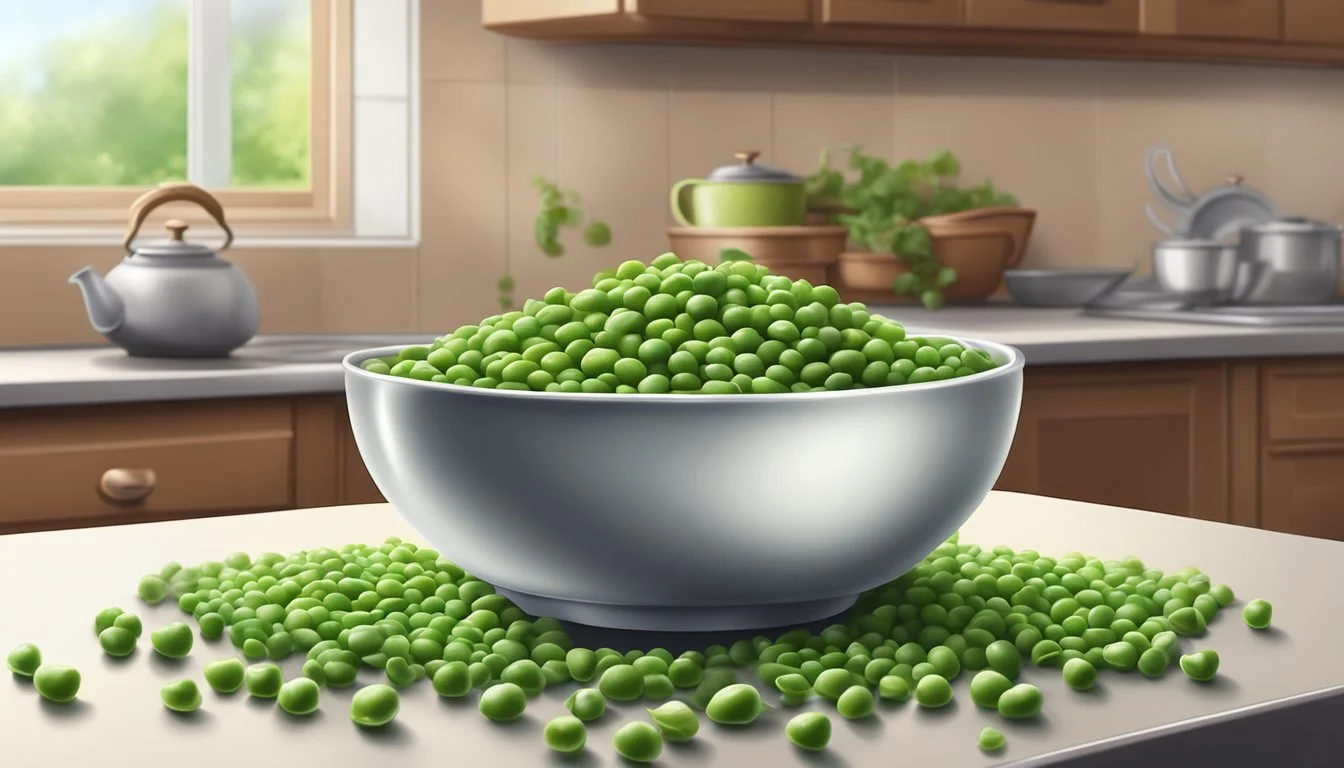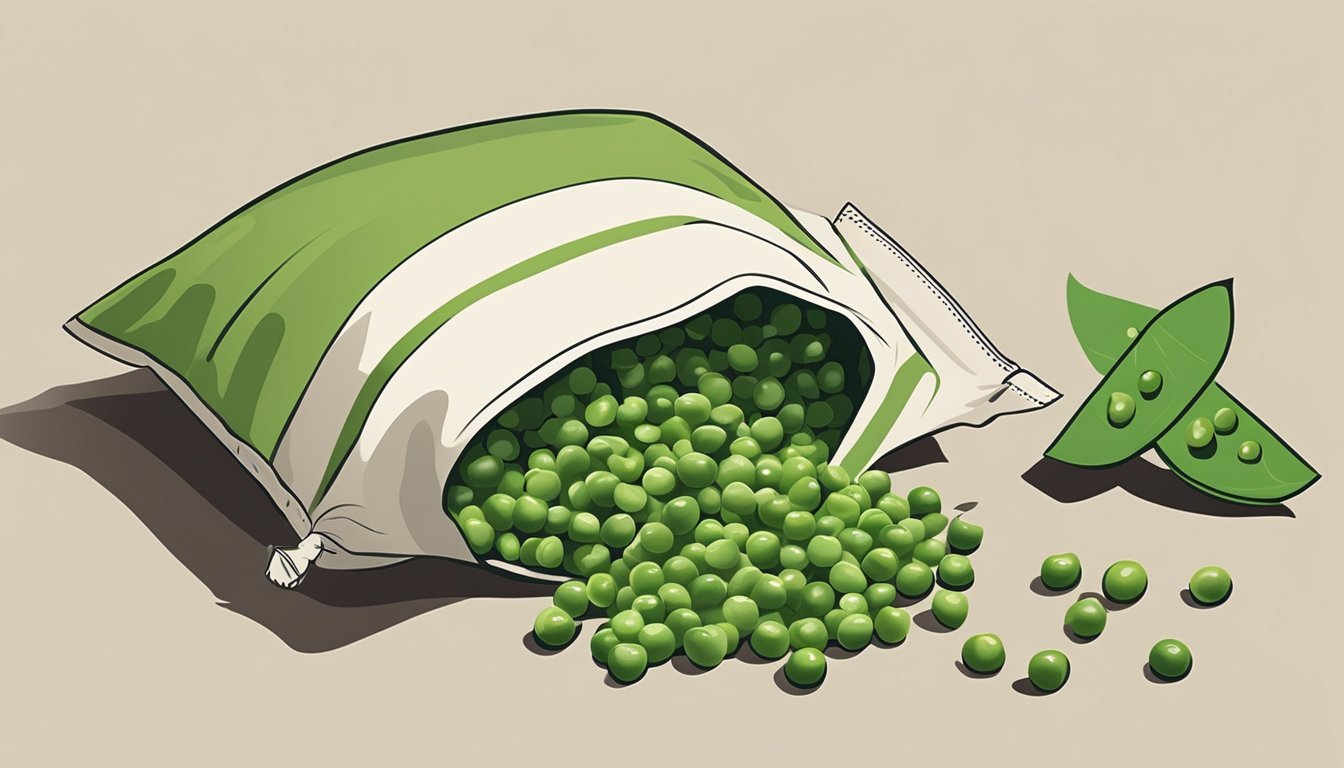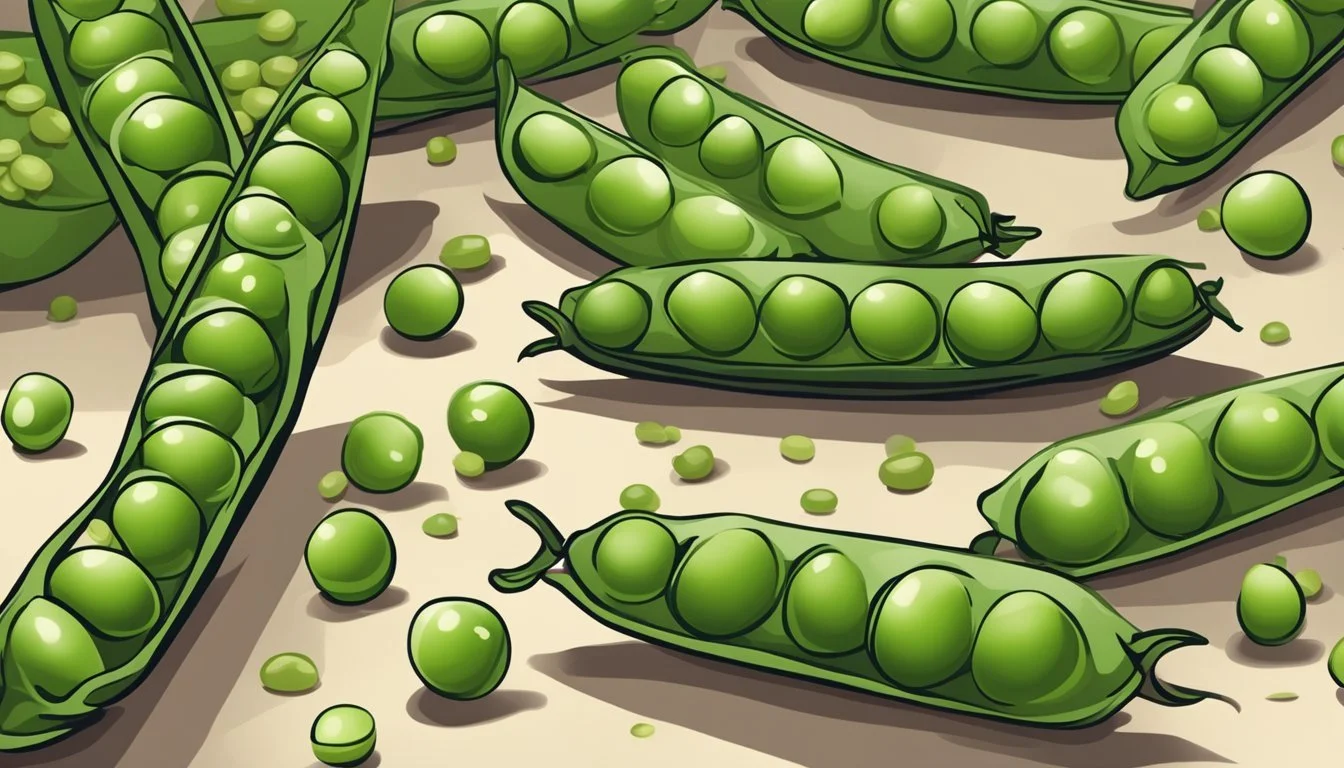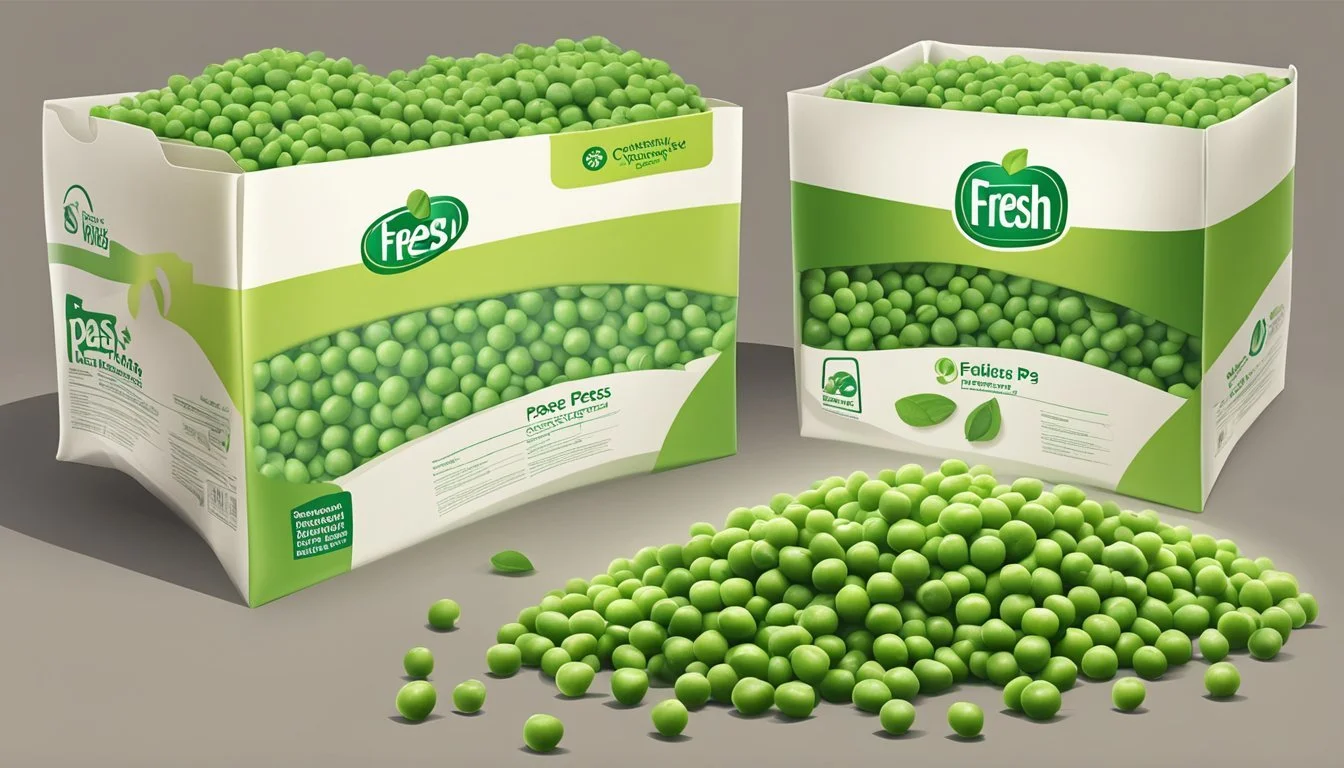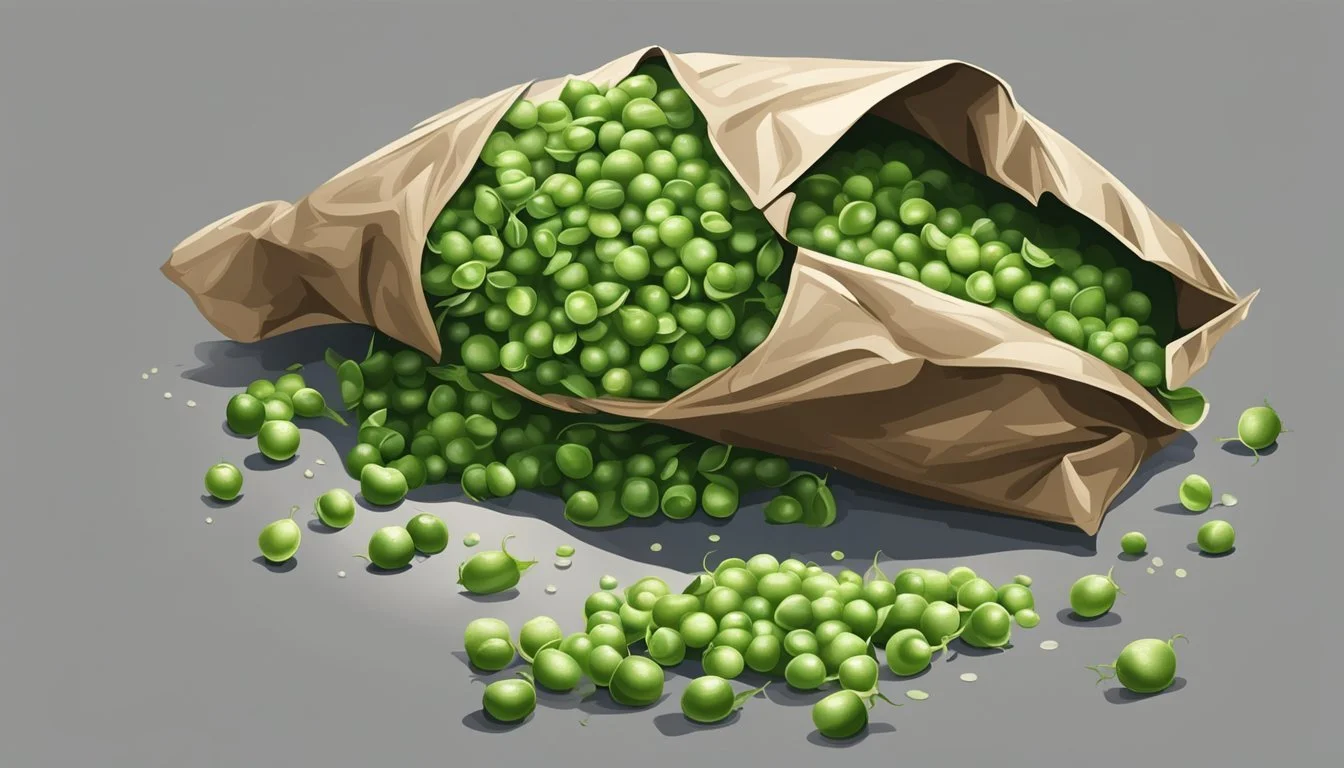Do Peas Go Bad?
Understanding Shelf Life and Storage
Do peas go bad? Absolutely. Like many other vegetables, peas have a limited shelf life and can spoil if not stored properly. Fresh peas typically last about a week in the refrigerator when stored in the crisper drawer. If blanched and frozen, their quality can be maintained for 8-12 months.
The signs of spoiled peas are clear. Fresh peas should be vibrant green and have a mild, sweet scent. Discoloration, mold, and a sour odor are indicators that your peas are no longer fresh. Canned and dried peas have different shelf lives, with canned peas lasting for years and dried peas potentially lasting indefinitely if stored in airtight, oxygen-free containers.
For safe consumption and optimal quality, it's crucial to store peas correctly. Keep fresh peas in the refrigerator and ensure frozen peas are well-sealed. By following these guidelines, you can enjoy the delicious and nutritious benefits of peas without worry.
Understanding Peas and Their Types
Peas come in various forms and varieties, each with its own unique characteristics and uses. Whether fresh, frozen, or canned, they provide essential nutrients and delightful flavors.
Characteristics of Fresh Peas
Fresh peas, such as garden peas or English peas, are known for their vibrant green color and firm texture. They should have a mild, sweet scent, indicating their freshness. Discoloration, mold, or a foul odor are signs of spoilage. Snow peas and sugar snap peas, with their edible pods, are crisp and sweet, making them excellent for fresh salads or quick cooking.
Differences Between Frozen and Canned Peas
Frozen peas are often blanched before freezing, preserving their bright color and nutritional value. They can last 8-12 months in the freezer without significant loss of quality. Canned peas, however, may be stored for longer periods but often contain added salt or preservatives. They tend to be softer and may lack the vibrant flavor of fresh or frozen peas. Both forms are convenient, but the choice depends on the desired texture and taste.
Varieties of Edible Peas
Several varieties of peas are commonly consumed, including garden peas, also known as English peas, which are shelled before eating. Snow peas and sugar snap peas feature edible pods and are appreciated for their crisp texture. Sugar snap peas, developed in the 1970s, combine the sweetness of garden peas with the convenience of edible pods. Dried peas, a staple in many cuisines, including split peas, are legumes that require soaking and cooking, used often in soups and stews.
By recognizing the different types and preparation methods, it becomes easier to select the right variety of peas for various culinary needs. Each type brings specific benefits and flavors to dishes, contributing to their versatility in the kitchen.
Signs of Spoilage
Identifying spoiled peas is essential to ensure you consume fresh and safe produce. Key indicators of spoilage include changes in odor, color, and texture.
Odor and Color Changes
One of the first signs that peas are going bad is a foul odor. Fresh peas have a mild, earthy smell. When they start to spoil, the odor becomes sour or musty.
Color changes are another clear indicator. Fresh peas are a vibrant green. As they spoil, they may turn yellow, brown, or exhibit dullness. Discoloration like this suggests the peas are no longer fresh and should be discarded to avoid health risks.
Texture and Mold Identification
The texture of peas also changes when they spoil. Fresh peas should be firm and crisp. Spoiled peas become mushy, soft, or slimy to the touch, indicating they are no longer good to eat.
Mold growth is another tell-tale sign. Look for fuzzy or powdery patches on the peas. Mold often appears white, green, or black and signals that the peas should be discarded immediately. Moldy peas are unsafe to consume and can pose health risks.
Shelf Life and Expiration
Peas can last for varying durations depending on how they are stored. Fresh peas have a shorter shelf life compared to frozen peas, but proper storage methods can extend their usability.
Fresh Peas Shelf Life
Fresh peas, if stored correctly, can last up to 1 week in the refrigerator. They should be kept in the crisper drawer to maintain optimal freshness. The key indicators of freshness include a mild, sweet scent and vibrant green color. If peas develop a sour smell or show signs of mold, they should be discarded. Checking the expiration date on packaging can also be useful to ensure quality.
Preserving the Quality of Frozen Peas
Frozen peas remain good for 8-12 months when stored properly. The quality is best maintained by blanching peas before freezing, which helps preserve their color, flavor, and nutrients. It's advisable to store them in airtight containers or vacuum-sealed bags to avoid freezer burn. Always label the container with the freezing date to monitor their shelf life.
Proper Storage Techniques
Ensuring peas stay fresh and last longer requires suitable storage methods, whether they are fresh, frozen, or dried. These techniques help maintain their flavor and nutritional value.
Storing Fresh Peas
Fresh peas should be stored in the crisper drawer of a refrigerator. They can be placed in an airtight container or a plastic bag. Proper storage in the fridge keeps them fresh for up to a week. Reducing exposure to moisture is key, so it’s important to ensure the container is sealed tightly. Keeping peas dry and cool slows down their spoilage.
Freezing and Refrigerating Techniques
To freeze peas, blanch them in boiling water for 1-2 minutes, then quickly cool them in an ice bath. This preserves their color and nutrients. After blanching, dry the peas thoroughly on a paper towel-lined tray.
Next, spread the peas on a parchment-lined baking sheet to freeze individually before transferring them to freezer-safe containers. Removing as much air as possible from the container, such as using vacuum sealing or heavy-duty freezer bags, can extend their shelf life up to 12 months.
Extending Shelf Life of Dried and Canned Peas
Dried peas should be stored in a cool, dark place, ideally in an airtight container to prevent moisture exposure. This helps maintain their quality for months.
Canned peas, once opened, should be transferred to a food storage container and kept in the refrigerator. Properly stored canned peas can last for several days. Using reusable plastic bags and labeling them with the storage date can also help in keeping track of their freshness.
Food Safety and Health Risks
Proper storage and handling of peas are crucial to preventing foodborne illnesses and avoiding cross-contamination.
Preventing Foodborne Illnesses
Foodborne illnesses can stem from improper hygiene during the handling and preparation of peas. To minimize these risks, it is paramount to always wash hands thoroughly with soap and water before and after touching peas. Clean utensils and surfaces help prevent the spread of pathogens.
Storage temperature is crucial. Fresh peas should be kept between 32-40°F (0-4°C) to retard bacterial growth. Consistently keeping peas at these temperatures reduces the likelihood of spoilage. For dried peas, ensure they are stored in an airtight container in a cool, dark place to preserve their quality.
Avoiding Cross-Contamination
Cross-contamination can occur when pathogens from other foods or surfaces contact the peas. Separate raw foods like meat and poultry from peas during storage and preparation. Use distinct cutting boards and utensils to further mitigate risks.
Sanitizing cutting boards and countertops after they come into contact with raw foods is a simple but effective step. Establishing a no-touch zone for raw food preparation can further ensure that peas are safe from cross-contamination. Adhering to these practices significantly lowers health risks associated with preparing and consuming peas. Use only clean, dry containers to store peas, as moisture and unclean conditions can introduce harmful bacteria.
Preparing Peas for Storage or Use
Proper preparation of peas is essential to maintain their freshness and nutritional value, whether you plan to freeze, dry, or use them immediately.
Blanching Process for Freezing
Blanching peas before freezing is crucial to preserve their color, texture, and nutritional qualities. Start by bringing a large pot of water to a boil. Once boiling, add the shelled peas and blanch them for 1-2 minutes. Immediately transfer the peas to an ice bath to halt the cooking process. Pat the peas dry with a clean towel.
Spread the blanched peas on a parchment-lined baking sheet and place them in the freezer. Freeze them for about an hour. Once frozen, transfer the peas to a freezer-friendly bag or container, ensuring any excess air is removed to avoid freezer burn. Peas stored this way can last up to 12 months.
Drying and Preparing Dried Peas
Drying peas offers a long-term storage solution while maintaining their nutritional value, especially their fiber content. Start by sorting through the peas to remove any damaged or discolored ones. Thoroughly wash the peas under cold water to remove any dirt or debris.
After washing, place the peas in a dehydrator or an oven set at its lowest temperature. Spread them in a single layer on a baking sheet, allowing for adequate airflow. Drying time will vary, but peas are typically ready when they are hard and brittle. Once completely dry, store the peas in an airtight container with an oxygen absorber to prolong their shelf life, typically up to 20 years.
Effective Washing Techniques
Proper washing of peas is essential for removing dirt and potential contaminants. Begin by rinsing peas under cold running water. Place the peas in a strainer or colander, gently rubbing them with your hands to dislodge any debris. For a more thorough cleaning, fill a bowl with cold water and soak the peas for a few minutes, then rinse again.
Always ensure your hands are clean before handling the peas to prevent the transfer of bacteria. For best results, dry the washed peas with a clean towel if you're preparing them for immediate use or further storage processes like blanching or drying. Proper washing techniques contribute to the overall quality and safety of the peas in your recipes.
Using Peas in Cooking
Peas are a versatile ingredient that can be used in a variety of dishes to enhance flavor and nutritional value. They provide a good source of fiber and proteins, making them a nutritious addition to meals.
Incorporating Peas into Recipes
Peas can be added to numerous dishes, ranging from soups to stir-fries. In soups, they bring a sweet flavor and vibrant color. To maintain their texture and nutrients, it’s crucial not to overcook them. In stir-fry recipes, peas add a delightful pop and can be paired with other vegetables like carrots or bell peppers.
For pasta dishes, peas can be tossed in at the end of cooking. This ensures they stay bright green and retain their natural sweetness. For those who love rice dishes, mixing in some peas can elevate both the visual appeal and nutritional content. Peas can also be pureed into sauces or blended into smoothies for a hidden boost of nutrition without altering the flavor significantly.
Nutritional Considerations
Peas are rich in fiber and proteins, contributing to a balanced diet. A cup of peas typically contains around 8 grams of protein and 7 grams of fiber. They are also a good source of vitamins such as vitamin C and vitamin K.
When cooking peas, it is important to retain their nutrients. Overcooking can leach vitamins and diminish their nutritional value. For optimal retention, steaming or microwaving peas for a short duration is recommended. These methods are not only quick but also help preserve the peas' natural vitamins and minerals.
Incorporating peas into your diet can help improve digestion due to their fiber content and provide plant-based protein, which is essential for muscle maintenance and growth.
Reducing Food Waste
Reducing food waste involves both reviving wilting peas and finding creative ideas for leftover peas. Proper storage and handling can significantly extend their shelf life and maintain nutritional value.
Reviving Wilting Peas
Wilting peas can often be revived and salvaged, which helps cut down on food waste. If they appear limp, soaking them in an ice water bath for 15-30 minutes can restore their crispness. This method helps rehydrate the peas, making them firmer and more appealing for cooking.
Another approach is to blanch the peas. Quickly boiling them for 1-2 minutes and then transferring them to an ice water bath not only revives their texture but also helps in preserving their color and nutritional value. This is especially useful for peas that seem past their prime but are not spoiled.
Ideas for Leftover Peas
Leftover peas can be integrated into a variety of dishes, preventing unnecessary waste. One simple idea is to add them to soups and stews for extra nutrition and flavor. Peas work well in both creamy soups and broth-based stews.
Peas can also be used in salads, either cold or warm. Mixing them into grain salads with quinoa or couscous provides a balanced meal with a good source of protein. Additionally, blending peas into spreads or dips, like a pea hummus, offers a delicious alternative to traditional options.
By using these methods, leftover peas can be effectively utilized in daily meals, reducing food waste while ensuring a nutritious diet. Proper storage conditions, like keeping peas in an airtight container in the refrigerator, also help in extending their usability.
Packaging Options for Peas
Effective packaging ensures the longevity and quality of peas. Various packaging choices cater to different storage needs, whether preserving fresh peas or extending the life of frozen and dried varieties.
Choosing the Right Packaging
Selecting proper packaging is vital to keep peas fresh and safe. Airtight containers are the best for preventing moisture and pests from reaching peas. They also help maintain peas' nutritional value.
Perforated plastic bags are ideal for fresh peas. These bags allow airflow, preventing condensation and spoilage. Resealable plastic bags are convenient for both fresh and frozen peas, making it easy to store and access peas as needed.
For long-term storage, especially with dried split peas, vacuum-sealed bags can be exceptionally effective. They remove air, significantly reducing the risk of spoilage.
DIY Packaging Solutions
Homemade packaging provides cost-effective and practical alternatives. For fresh peas, using a simple mix of resealable plastic bags and paper towels can help. Wrap the peas in a damp paper towel to maintain moisture balance before placing them in a resealable bag.
For frozen peas, blanching them first and then using zip-lock bags or freezer-safe containers can extend their shelf life. Ensure to remove as much air as possible to prevent freezer burn.
Dried split peas can be stored in mason jars or other glass containers with tight-fitting lids. Label these containers with packing dates to track shelf life more easily. Reducing exposure to light by using opaque containers can also protect nutrient content.
Troubleshooting Common Problems
Freezing or storing peas can lead to several common issues. Understanding how to properly address freezer burn and deal with wrinkled or dry peas ensures better quality and taste.
Addressing Freezer Burn
Freezer burn is a common issue when freezing peas. It happens when peas are exposed to air, leading to dehydration and ice crystals forming on the surface.
To prevent this, ensure that peas are stored in airtight containers or vacuum-sealed bags. Before freezing, blanch peas in boiling water for 1-2 minutes and then quickly transfer them to an ice bath. This process helps maintain texture and color.
If peas already have freezer burn, they may appear dry and shriveled but are still safe to eat. Cooking them in soups or stews can help rehydrate and disguise the texture.
Dealing with Wrinkled or Dry Peas
Wrinkled or dry peas often indicate improper storage or prolonged exposure to air. Fresh peas should be stored in the refrigerator and used within a few days.
To refresh dry peas, soak them in water for several hours before cooking. This can restore some moisture and improve their texture. When cooking, add extra moisture through sauces or broths.
Storing peas in an airtight container or zip-lock bag in the freezer can maintain their freshness for longer. If canned peas become wrinkled, ensure they haven't reached their expiration date and check for any unusual odors before use.
By addressing these issues promptly, you can enjoy peas at their best quality.

